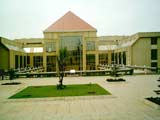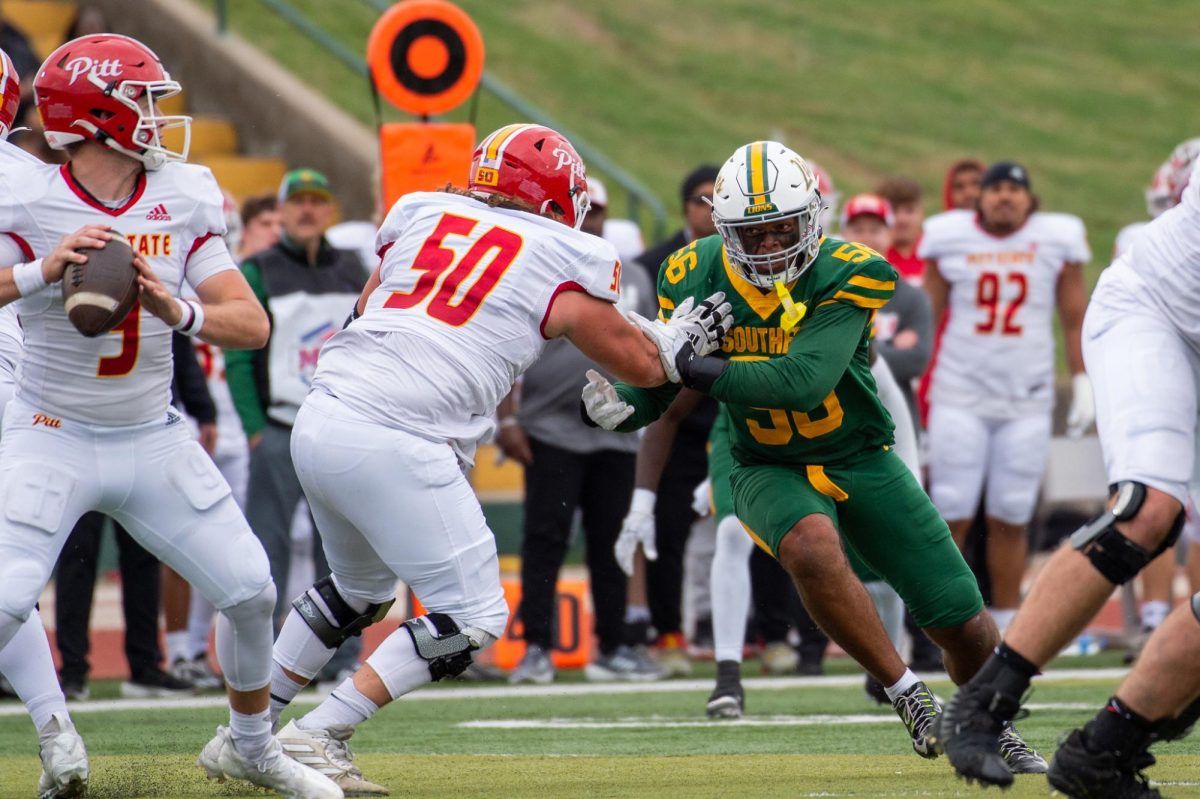U.N., A.U. step in to try to settle conflict

The headquarters of the African Union is located in Addis Ababa, the capital of Ethiopia.
When I started doing the research, I knew that I had to do some reading before conducting my interviews. I met with the head of the African Union Conflict Management Center. We had an extensive discussion about the conflict and then he directed me to the political analysts for the Ethiopia-Eritrea conflict, who gave me the permission to read some of the classified documents pertaining to the border dispute. During this time, the African Union was holding its one-week-long annual summit. This meant no one would be available for an interview until the summit was over.
This was perfect for me because this gave me a chance to go through the documents given to me to read. I went through resolutions, letters and reports from the U.N. secretary general, the African Union Chairperson, as well as letters from the two presidents Meles Zenawi and Isaias Afwerki and other relevant reports.
Before doing my research, I had the notion that the border dispute was very simple; however, after reading the letters and other documents, I realized the complexity of the conflict. In addition, I drew the conclusion that this conflict was not really about the 1000km (620 mile) frontier or about which country should have the small town of Badme. I surmised that the conflict was more complex than what the public believes.
The most recent conflict between Ethiopia and Eritrea started May 6, 1998. This war claimed the lives of tens of thousands of people. The Organization of African Unity, now called the African Union, called for a summit in November of 1998 in Ouagadougou, Burkina Faso to urge the immediate withdrawal of Eritrean and Ethiopian troops from the border. At this summit, the OAU presented the Technical Arrangements for the Implementation of the Framework Agreement and Modalities. Eritrea agreed to the implementation; however, Ethiopia refused because it was not satisfied with the clause in the implementation that stated that the border between Ethiopia and Eritrea be marked based upon the U.N. cartography. The U.N. cartography for African countries is really based upon “pertinent” colonial treaties. I was very discouraged to read this especially since, in my opinion, the borders drawn by the colonial powers on the African continent have been the reason for many conflicts.
By April 2000, Ethiopia and Eritrea were engaged in proximity talks which were a sign of progress. The international community was very involved in the peace process, however, hostilities between the two countries reinitiated on May 12, 2000.
On May 17, 2000 the international community passed resolution No. 1298 under Chapter VII of the U.N. Charter which condemned the fighting, demanded a halt to the fighting and sought all states to stop selling the two countries any ammunition. On May 19, 2000, both parties signed the Framework Agreement and Modalities. On June 18, 2000, the cease-fire was signed in Algiers, and the U.N. Mission in Ethiopia and Eritrea was formed under resolution No. 1320 of the OAU auspices.
The UNMEE deployed 4000 peacekeepers and other military observers to monitor the Temporary Security Zone.
The TSZ is a 25 km long strip of land that separates the two countries and is to be used by the UNMEE peacekeeping troops as a buffer zone to maintain peace at the frontier. The UNMEE mandate clearly says that it is to monitor the cessation of hostilities and the position of Ethiopian and Eritrean forces once they have redeployed. As well as “coordinate and provide assistance for humanitarian mine-action activities in the TSZ.”
Eventually in December 2000 the Peace Accords were signed, and the Boundary and Claims Commissions were established. The Boundary Commission was specifically created to work on drawing up an appropriate border between the two countries. On April 13, 2002, the Boundary Commission stated its ruling, which favored Eritrea; however, instead of abiding by the decision, the two countries have chosen to be intransigent. Ethiopia has refused the border ruling and Eritrea has refused to hold any talks with the international community until the border decision is implemented. This is the reason for the current dormant state of the peace process.
I had the opportunity to talk with Mr. Rodney S. Kiwa, senior political representative and the head of the A.U. Liaison Mission in Ethiopia and Eritrea. The A.U. mission works with the U.N. mission; the latter was created under the auspices of the A.U. This is the first mission that was started by the African Union, and the United Nations was only called upon because the African Union lacks resources. Over some tea, Kiwa and I talked about the conflict and the current stalemate in the peace process. The first thing that I expressed to Kiwa was how much I disagreed with the boundary decision being based upon colonial maps. The African Union was created in 2000 to promote African self-reliance. Kiwa said in 1964 the OAU made the decision to make all border decisions based upon colonial maps. The OAU (and the African Union) has tried to portray itself as an unbiased organization that does not favor one country over the other,
but rather unites Africa instead of dividing it.
Kiwa said he believed the main problem with the peace process involves a misunderstanding.
“To understand the situation we must understand that there is a difference between delimitation and demarcation,” he said.
He explained the two countries had initially agreed to the delimitation of the border – the imaginary line drawn on the map. However, Ethiopia has refused to comply with the demarcation, which is the physical marking of the border. Ethiopia criticized the Boundary Commission for not taking into consideration the human geography. There are many people who live at the border of Ethiopia and Eritrea who are unaware of the meaning of a border. Those who are aware of a border are not content with being told that they should be Eritrean when in actuality they want to be Ethiopian or vise versa. I was intrigued at how the situation had gotten to this point. Surely there must have been some kind of dialogue or way for each side to express their concerns.
“These two countries have parallel views,” Kiwa said.
He also said the two countries saw the process of demarcation differently. The Eritreans have taken a very legalistic approach and have preferred to comply with the Boundary Commissions decision. Ethiopia on the other hand has preferred to negotiate and hold dialogues concerning the decision.
Kiwa said what is needed is initiation of dialogues at the highest political levels for both states. However, Eritrea has completely refused to start any type of negotiation. When the secretary general of the United Nations tried to send his Special Envoy Axworthy, the Eritrean government refused to see him.
In my opinion, that was a bad move on the part of the Eritrean government because they are getting a reputation as a refractory state.
“If we are to obtain long lasting peace, demarcation should be free will,” Kiwa said. “Both parties must agree to impose a solution.”
His statement is true and would be ideal if the two countries could see eye to eye.
Your donation will support the student journalists of Missouri Southern State University. Your contribution will allow us to purchase equipment and cover our annual website hosting costs.
















